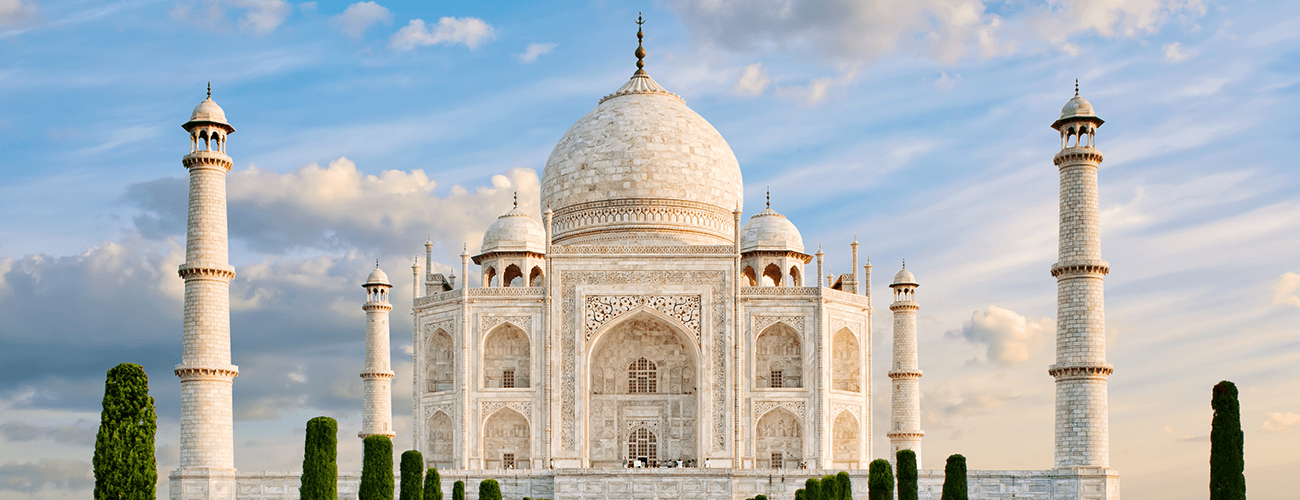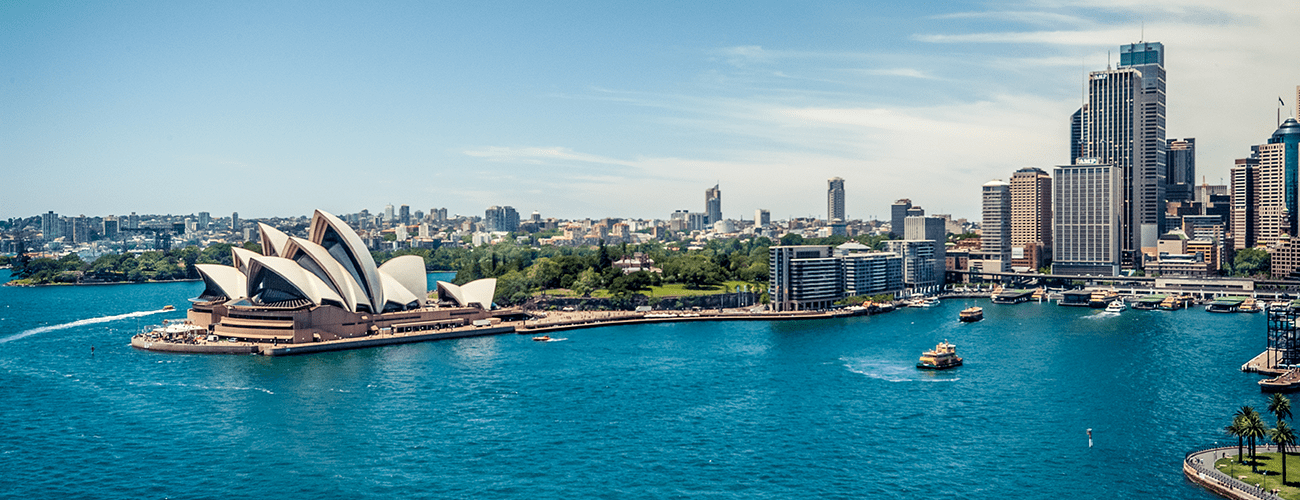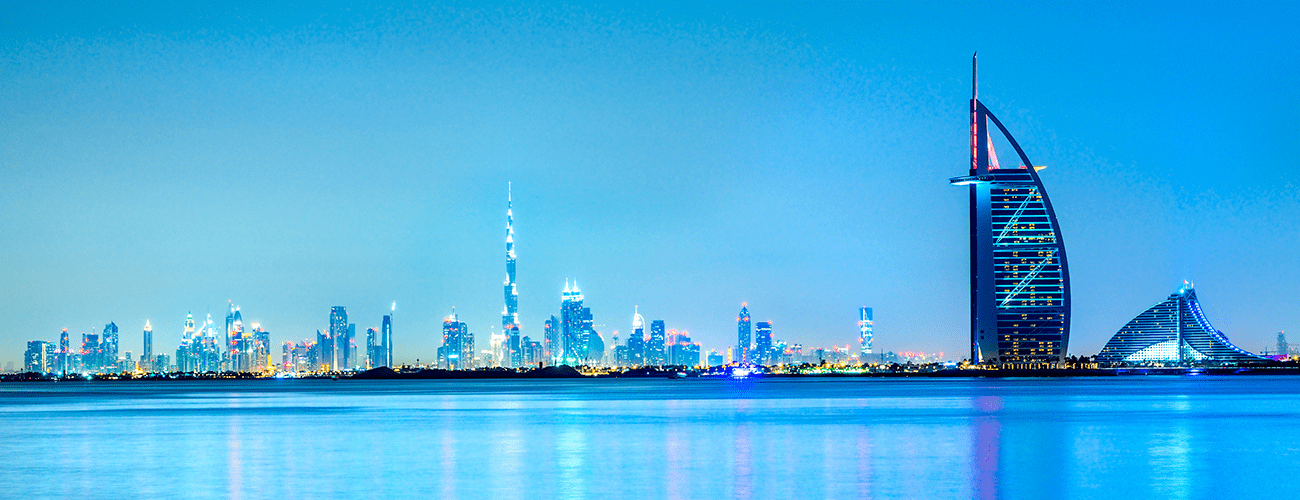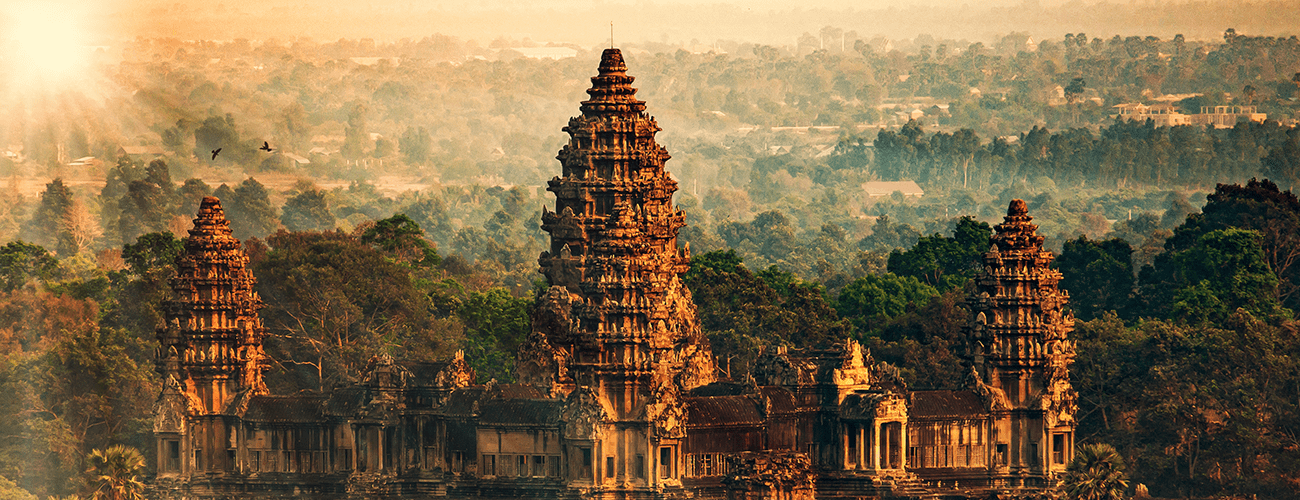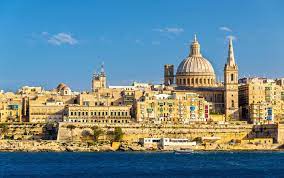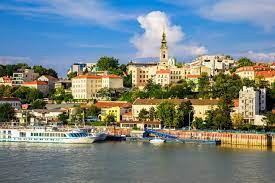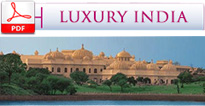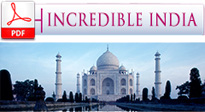Things to know about India
India is a great mélange of diverse culture, tradition, landscape, religion, festivals, orgasmic cuisines and more. The country is a union of states that are marked with prime attractions alluring a lot of International travelers from all around the world.
It is no exaggeration to say that one lifetime is not enough to savor the sights, sounds and experiences that this incredible country has to offer. Right from magical Jammu and Kashmir in the north to pristine Kerala in South and notable Arunachal Pradesh in the east to legendary Gujarat in west, India has a whole lot to offer. The mighty Himalayan peaks and the expansive deserts offer some of the most amazing experiences on earth.
Come and visit one of the seven wonders of the World- Taj Mahal in Agra, unravel the mystery behind several imposing havelis of Rajasthan, offer sincere prayer at iconic Gompas of Gangtok, cruise through the backwaters of Kerala on a houseboat and get enthralled with world’s largest salt desert, Great Rann of Kutch. The country also boasts of Goa and Andaman and Nicobar Islands that are like storehouses of a number of gorgeous beaches. Moreover, India is a land of several religions and thus it is home to innumerable temple and religious site belonging to all faiths. All the pious sites are not only highly revered places of worship but are architectural marvels too.
With so many unique attractions, India is known for its own matchless charm. Plan a trip to India and make your vacation worthwhile.
Tourist Visa
Every foreign national traveling to India is required to possess a valid national passport with a valid Indian visa. Visa can be applied through online application link or at: https://indianvisaonline.gov.in.
For manual application, fill the complete Visa application form and submit at the concerned Indian Visa Application Center (IVAC) or directly to Indian Mission/ Post in absence of IVAC, along with the requisite supporting documents.
Eligibility for e-Visa (electronic Visa)
- E-Visa will be issued for travelers who are visiting India for leisure, sight-seeing, casual visit to meet friends or relatives, short duration medical treatment or casual business visit.
- The traveler’s passport should have at least six months validity from the date of arrival in India. The passport should also have at least two blank pages for stamping by the Immigration Officer.
- The international traveler should have a return ticket or onward journey ticket, with adequate money to spend during his/her stay in India.
- An international traveler of Pakistani origin holding Pakistani Passport has to apply for regular Visa at Indian Mission.
- E-visa is not applicable for Diplomatic/Official Passport Holders or Laissez-passer travel document holders.
- E-visa is not available to individuals endorsed on Parent’s/Spouse’s Passport i.e. each individual should have a separate passport.
- International Travel Document Holders are not also eligible for e-Visa.
Instructions for e-Visa
- There are 3 sub-categories of e-Visa, i.e., e-Tourist visa, e-Business Visa and e-Medical visa. A traveler is permitted to club these categories on visit to India.
- E-Visa applicants of the eligible countries/territories may apply online, minimum 4 days in advance of the date of arrival, with a window of 120 days. Example: If you are applying on 1st September then applicant can select arrival date from 5th September to 2nd January.
- In addition to the e-Visa application, it is mandatory to submit a recent front facing photograph with white background and photo page of passport containing personal details like name, date of birth, nationality, expiry date etc. Additionally, one more document depending upon the e-Visa type is required to be uploaded. The application is liable to be rejected if the uploaded documents and photograph are not clear as per specification.
- E-Visa fee is country/territory specific. Bank transaction charges of 2.5% will be charged additionally on applicable e-Visa fees. The fee must be paid at least 4 days before the expected date of travel otherwise application will not be processed.
- E-Visa fee once submitted is non-refundable, as the fee is for processing of the application and is not dependent on either Grant or Rejection of Electronic Travel Authorization (ETA).
- Every applicant should carry a copy of Electronic Travel Authorization (ETA) along with him/her at the time of travel. Please confirm that your ETA status is shown as ‘GRANTED’ prior to commencement of your journey.
- Biometric details of the applicant are mandatory at the immigration on arrival in India.
- Validity of e-Visa will be 60 days from the date of arrival in India. Double entry is permitted on e-Tourist Visa and e-Business Visa, while triple entry will be permitted on e-Medical Visa.
- E-Visa is valid for entry through 24 designated Airports, i.e. Ahmedabad, Amritsar, Bagdogra, Bengaluru, Calicut, Chennai, Chandigarh, Cochin, Coimbatore, Delhi, Gaya, Goa, Guwahati, Hyderabad, Jaipur, Kolkata, Lucknow, Mangalore, Mumbai, Nagpur, Pune, Tiruchirapalli, Trivandrum & Varanasi and 3 designated seaports, i.e. Cochin, Goa, and Mangalore. However, exit is possible from any of the authorized Immigration Check Posts (ICPs) in India.
- Eligibility for e-Visa is a maximum of two times in a calendar year, i.e. between January and December.
- The e-Visa is non-extendable, non-convertible and not valid for visiting Protected/Restricted and Cantonment Areas. If you intend to visit Protected/Restricted/Cantonment areas, get prior permission from the Civil Authority.
- While making payment of the e-Visa fee, be careful. If the number of unsuccessful attempts exceeds three (03) attempts, then the application id would be blocked and the applicant would be required to apply afresh by filling the application form again and regenerating a new application id.
- The e-Visa fee payment status updation may require up to 4 hours due to technical reasons/network delays. Before re-applying, the applicants are requested to wait for 4 hours, after final submission of the application form and payment of the fee.
Other requirements of Indian Visa
- Nationals of Yellow Fever affected countries or travelers arriving from these countries are required to carry a Yellow Fever Vaccination Card at the time of arrival in India, otherwise they may be quarantined for 6 days upon their arrival.
More information regarding Indian Tourist Visa on Arrival
If you wish to seek more information regarding the visa , you can send an email to indiatvoa@gov.in or call +91-11-24300666. You can also follow the link https://indianvisaonline.gov.in/visa/tvoa.html to visit the official site of Indian Government’s tourism department.
Indian Currency
Currency Exchange in India:
As you reach any international airport of India and leave the customs area you can find currency exchange booths. One thing to take note of is that you may not be allowed to enter again to exchange the currency once you stepped out of the airport. Jotted down are some important points to keep in mind when exchanging currency in India.
- Always collect your receipt for currency exchange as this shall help you in proving your source of funds in India. The receipt will also help in knowing the rate of exchange you were given. And when you will head back home you will be able to reconvert the left amount to your own currency by showing the receipt.
- Only exchange your currencies from authorized dealers like Thomas Cook and American Express. Also buying foreign currencies from unauthorized places is an illegal act.
- Make sure that you are not handed over fake currency notes, especially of heavy amounts such as INR 100, INR 500 and INR 2000.
- Try to protect yourself from fraud cases. There are many scams in which foreigners are offered an attractively lesser rate of currency exchange. As a matter of fact, banks offer much lower price than local money exchangers.
- Indian currency notes printed before 2005 are no more acceptable since 1 January 2015. If you have such old notes, you can exchange them for the same value in an Indian Banks as soon as you can.
- Foreign visitors have to buy train tickets using foreign currencies if they do not have proof receipt of currency exchange. Otherwise in case of possession of proof you can buy the train tickets of tourist quota using Indian currency easily.
When to Go to India
Different parts of India experience different weather conditions. You can plan visiting this incredible country anytime round the year. The best time to visit India totally depends on the destination you are visiting. When most of the country gets drenched in rain, there still are regions that are hit by drought. The Indian Meteorological Service has divided the country into seven regions as per their climatic variations. However, the peak season and the best time to visit India is during the winter season when the hill-stations of Northern India gets carpeted with snow and regions of South India receives refreshing rainfalls.
Winter Holiday
As the temperature dips, chilly air engulfs almost entire country, which also is one of the best seasons to visit India. The months from November to March are ideal for exploring this beautiful nation to the fullest. This is also is the time for a number of fairs and festival, which create a string of holidays. The list of places to visit in winter in India is endless. There are beaches, hill stations, and other amazing cities.
Places like Agra, Himachal Pradesh, Gujarat, Tamil Nadu, Madhya Pradesh, Goa, Rajasthan, and Kerala boast of an amazing weather. One can enjoy adventure activities, water sports, sightseeing and other leisure activities. The page enlists some of the top winter holiday destinations in India that are worth-exploring. Browse through the list and pick your option.
What to Pack
What you pack in your luggage totally depends on your itinerary and your travel style. For example, if you are visiting major cities, you might need to pack fancy footwear and clothes but if you are into exploring rural India, it is best to carry slippers and comfortable shoes and clothes. It’s not that you cannot find things here, but it is always better to come prepared already. Let us brief you about things you need to pack for India, from luggage to miscellaneous items.
Luggage
It is always best to make sure the type of luggage you are carrying does not end up bugging you when you don’t have a porter in rescue. If you will be visiting cities, then you can easily carry a suitcase with wheels. But rolling a suitcase could be a tough task in rugged lands like those in rural India, and in that case a backpack is the best option.
Medicine
This is surely not a problem in India, as this country is already leading in medical field. You can easily get specific ailments that are similar to those found overseas; you only need to recall the name of the brand. You might not be able to find specific rare medicines and thus it is best to pack them along. There are some medicines which have a different name in India, like acetaminophen in India is called Paracetamol. You can simply visit the chemist and tell him your symptoms and he will hand over the apt medicine. But this is ideal only if the condition is not severe such as headache and stomach-ache.
Clothes
Considering the fact that India is a cultural country, this needs to be kept in mind that in most places, especially rural India, it is best to cover most of your body parts. However, short dresses are acceptable in cities like Delhi, Mumbai and Bangalore etc. It is highly recommended for girls to keep a thin stole or scarf handy.
Always do your homework and research before visiting any region of India. Not only India is diverse in culture but in weather conditions as well. When Kashmir of North India is carpeted with snow, regions of South India experience moderate climate. Hence, make sure that you are packing your clothes appropriately as per the weather.
Footwear
What kind of footwear you are packing again totally depends on the nature of your trip and itinerary. Go for slippers or comfortable shoes if you are going for sightseeing, shipping and beach-hopping. If you will visiting be major cities of India, do carry your fancy shoes if you might end up clubbing.
Miscellaneous
Sunscreen/ Sun block is essential especially if you visiting the beaches or specific regions of India. Also some regions of India are dusty and that’s when you would need hand-sanitizers and scarf. Other items you should pack for India are torch, toilet paper and chain. Usage of toilet paper is limited in India, though you can easily find them in hotels. It is best to keep a small lock and chain handy to protect your luggage from theft.
Culture and Etiquette
Differences in culture can become a roadblock in almost all kinds of things. If you are travelling to India, it is important that you take note of certain things. However, respecting the cultural preferences of any destination you are visiting is the right thing to do. India is slightly sensitive when it comes to its culture. Thus, the page enlists a list of do’s and don’ts as far as cultural etiquettes in India are concerned:
Dressing and Attire
- Try to avoid clothes that are too tight or dresses that are too revealing if you are visiting rural area. Try to be dress slightly conservative here as in covering limbs. Cities and towns are tolerant towards modern dressing and people living here themselves into wearing what are referred to as western clothes.
- If you are attending any business meeting or conference, you can wear business suites or shirts and trousers/knee-length skirts.
- Remove your shoes before entering any religious site or place of worship in India. You can buy a cheap pair of comfy shoes or sandals as you need to remove them at the entrance. A cheap pair is less likely to get stolen.
Religious Etiquettes
- Religion is a serious thing in India. Menstruating women are not allowed inside religious places in India. There are strict rules in some of the temples in India and should be followed.
- Try not to wear cut sleeves or shorts while visiting a Hindu temple. Avoid skin show.
- When you enter a Sikh Gurudwara or a Mosque, make sure your head is covered.
- In Jain temples, leather items are not allowed.
- Women are not allowed inside mosques and inner sanctums of South Indian temples.
- Do not click photos in temples or during cremation ceremonies.
Table Etiquettes
- Most of the food in India is eaten with hands. Use of knives and forks are traditionally not used here. A spoon is used in the case of soups and in only certain places, rice is eaten with spoon and at other place you use your hand.
- Wash your hands before eating.
- Avoid sitting down to start your meal until your hosts asks so, if you are visiting someone’s home. For eating bread (roti/naan), use your hands.
- In a normal Indian household, food is received and eaten with right hand and left hand is not considered clean. Even food is served generally in a particular order, which is- the guest of honor, the men and the children. The women in the family serve the food and eat after everyone has eaten though this now happens only in towns and villages.
- There also are certain dietary restrictions in India. For instance- Muslims do not drink alcohol and eat beef. Hindus do not eat beef and many of them are vegetarians. Sikhism followers also do not consume beef.
Tipping Manners
- If you like the services at a restaurant, tip10%.
- Offer INR 100-200 as tip to porters at railway station or hotels.
- Offer INR 1000 to 2000 tip to drivers and tour guides per day.
Giving and Receiving Gifts
- If you are attending important events like marriage or birth ceremony, carry cash as a gift. Avoid white flowers as they are used during funerals. During festivals, you can carry a box of sweets.
- Wrap your gift in red, yellow and green color as they are considered auspicious.
- Avoid giving leather gifts to Hindus and alcoholic beverages to Muslims.
- Do not use your left hand while giving or receiving gifts as it is termed as impolite.
- Do not open your gift as and when you get it. Do so only when your host insists you to do so.
Photo Etiquettes
- Taking photographs at military locations, airports and temples are not allowed.
- If you are visiting any tourist area, try to avoid clicking pictures of the people or the locals as they might not like it.
Greeting People
- When greeting elderly people, fold your hand, bow your head and say ‘Namaste’.
- Please take note that physical contacts like a hug and a shake hand is avoidable between men and women in India. Do not shake hands first, till the time the other person extends his or hand first.
- Try to say goodbye to everyone when you are leaving.
Language
- There are 22 official languages in India so language would not prove to be a barrier. You would find both Hindi and English speaking people here.
Visitors Custom
- When you are visiting someone, be punctual.
- Some people remove shoes before entering, you should also do the same.
- Although carrying a gift is not necessary but if wish to, you can do so. For children you can bring chocolates and for the elderly, fruits would be ideal. You can also bring something from your country.
Business Etiquettes
- Business meetings in India are slightly less formal in the Western countries.
- Be punctual and reach the venue of meeting on time.
- Flexibility and open-mindedness are a part of business meetings in India. Being rigid might be a negative thing.
- You can also bring a gift from your country. Indian base even their business on mutual trust.
- It is advisable to make appointments around a month in advance and also check for any sort of cancelations.
- Your business acquaintance might also indulge in some chit-chat before talking business. Do not be surprised as he is just trying to know you.
- It is advisable that you send some important information in advance through mail.
- Making an appointment for a follow-up meeting for important discussions about the prior as well as future meetings would also be right.
- You can also opt for a third party involvement to bring in credibility.
Do not feel intimated by reading this page about cultural etiquettes in India. Just follow what the locals are doing and what is given here. And, your visit to India is simply going to a memorable affair and you would want to come here again for more.
Travel Tips for Solo Travelers in India
India is one of the most popular destinations in the world, welcoming a huge number of travelers from all across the globe.
The country has wildlife, culture, art and craft, beaches, monuments, varied landscape and much more. India is a huge country and I am not exaggerating if I say that exploring it may take years. Solo traveling in India is not unsafe as it is shown to be. If you are planning to come here sans any company, here are travel tips for solo travelers in India:
Do not believe everything that media says
Today is the time of technology and information pours in from everywhere. Most of the times, media garners reactions and interests on negative content. Crime, poverty, and poor surroundings are highlighted. This, however, is not the entire truth. Be aware of the news but do not skip the bright side of India. The country has innumerable attractions, impeccable hospitality, huge opportunities, and latest technology. Every service thing is available online or in the form of mobile apps.
Understand the culture and be flexible
Every country has its cultural ethos and same is the case with India. When you are planning a trip to India, it is important that you value its traditions and not compare it with your country’s traditions. You might plan out things in a certain manner but that might not happen in that way. In that case, you can go for something else. Open-up to the new traditions and settings. The country has much to offer and would surprise you.
Strategize in advance
Solo travelers in India must plan their journey in advance. Make a plan at least 15 days in advance. If you need to make any booking, you can do so before arriving. If your itinerary involves train journey, book you rail ticket in advance, especially during holidays like Holi and Diwali. Similar is the case with hotel bookings. Look for great deals in advance. If you make an itinerary according to your interest and liking, India is going to be wonderful.
Learn the art of bargaining
Bargaining in India is an art and you must learn it. Mark it as an advice that a tourist, in any country, is thought to be rich. Thus the prices quoted to them are also often high. While you are shopping in a local market, you can take the help of locals in knowing about the correct prices. Do not forget to bargain!
Not let staring and questions bother you
Special attention is given to foreigners many times. Do not irritated or frightened if you notice people staring at you. Yes, you can definitely stop them from taking pictures if you are not comfortable. Some of them might not even known that they are causing unease. Do not feel upset, if the locals ask you about your family, relationship and culture. They are just trying to be friendly. India is different from the West and Indians like to share information with each other. They are brought up in such a manner and are taught that sharing is healthy.
Revel in the Local feel
India is a land of religion and you must be a part of the local festivities if you wish to have a good time here. While some festivals are celebrated all around the country, some are religion specific. There is Holi- the festival of colors; Diwali- the festival of lights and many more. Fairs and festivals in India are on-going all around the year. You can make friends with local people who will tell you the best way to enjoy during their festivals.
Shun over packing
When in India, how are you not going to shop! Pack less clothes so that you can enjoy shopping in India– be it clothes, artefacts, jewelry, spices and other things. Most of the medicines too are available here. You can pack the specific ones. However, you can pack essentials like documents and charging adapters.
Basic etiquette
There are certain basic etiquettes that need to be followed. Some cities in India are slightly conservative when it comes to dressing. If you are visiting a religious place, a village or someone’s home, cover your legs and shoulders. However, you can be yourself if you are visiting a beach, or a disc in a city. People here are also quite particular about greeting and respecting their elders. No one is expecting you to touch the feet of the elders in the family. Just doing ‘Namaste’ (folding hands) will do.
Another travel tip for solo traveler in India is keeping in mind the basics of public affection. PDA is not appreciated, especially amid couples. Also, be aware of the rules before visiting temples.
Stay connected with your family/friends
Always stay connected with your friends and family back home. This can be done through emails, phone calls as well as social network sites. For any local queries, your tour guide and hotel manager or your travel agent would be the best option. Try avoiding getting to close to someone whom you do not know properly.
Accommodation/Transportation
As far as accommodation is concerned, if you are traveling solo do not compromise on location of the hotel. Stay away from shady hotels. For commuting, you can go for public transportation. You can also book a cab through mobile apps. Trusting yourself and your instincts is the key. Unnecessary adventure is not advisable at any place. Be well-researched and do not loiter around at deserted places during night time.
Where to Go in India
It is not an overstatement that a lifetime might not be enough to explore a country like India. And thus, one visit is not enough for exploring the country’s enchanting destinations, even if you spend a year here. It is much better that you be flexible and focus on one or two parts of the country. While there are highly pumped-up and buoyant cities in India on one hand, there are tranquil rural regions too on the other, offering a heady mix to its visitor. You can stay here for months on a stretch.
The most-travelled tourist circuit in India is the Golden Triangle Tour- combining potpourri of cultures, Delhi- the capital city of India; Agra- the Mughal city that is home to Taj Mahal- one of the Seven Wonder of the World and the vibrant Pink City of Rajasthan-Jaipur. Each city in this circuit is a combination of striking monuments, lively markets and varied cultures. Possibly, Rajasthan is the most explored state in India because of its vast desert, impressive markets and food and magnificent Forts and Palaces of Udaipur, Jaisalmer, Bundi, Jodhpur and other cities.
If you move eastwards from Delhi, you walk beside the holy River Ganga that traverses through some of the most densely population regions of the country, finally reaching one of the seven holy cities of India, Varanasi or Benaras. Known for its spectacular evening Ganga Aarti, the city is the place that has still preserved age-old religious traditions and customs of India. Cruise on the placid waters of the Ganga and catch a glimpse of the rituals going on at the Ghats. Move further and you enter the cultural capital of India, Kolkata, formerly known as Calcutta. The city has been an important capital during the British era and now is a combination of the old and the new worlds.
Frequent travelers follow the Ganges route to arrive in Nepal but probably they are not really aware of the magic of mighty Himalayas of India, best known for their enchanting scenery and adventure opportunities that they offer. While Kashmir is crowned as the ‘Heaven on Earth’, there is Himachal Pradesh too with several mesmerizing hill towns. This Indian state has everything- pleasant weather and scenery, several amazing destinations, religious spot and more. There is Shimla, Manali, Kullu, Vaishno Devi and the list goes on. The remote Ladakh region mesmerizes you with its striking mysterious landscape and Dharamshala offers you a spiritual treat with its monasteries. Then, there is Uttarakhand- housing the revered Chota Chardham destinations, visited by thousands of pilgrims each year. Right on the opposite end of this chain, on the northern side of Bengal is beautiful Sikkim, one of the popular trekking destinations, offering an insight into Buddhist culture. The north-east region of India has lush greenery in abundance and offers respite from the stressful life of the cities.
From Kolkata if you start moving southwards along the coast, halt at Konark in Odisha (Orissa) to explore the UNESCO World Heritage Site of Sun Temple or Black Pagoda. Head further southwards and you enter Tamil Nadu, known for housing splendid temple, known for their Gopuram-style architecture. Madurai, a popular city here, houses a number of such architectural gems, which lie between Kaveri Delta and Nigiri Hills. The next stop can be one of the most popular South Indian states, Kerala, placed near the southernmost end of the Subcontinent on the west coast. The state offers tranquil backwaters, playful beaches, tropical climate, houseboats, villages, waterfalls, sumptuous food and the list continues. Move further up of the coast and you arrive in Goa, the beach state of India, one of the most-travelled destinations of India, popular all around the globe. A former Portuguese colony, it has beaches, churches, nightlife, food, booze, markets and more for backpackers as well as luxury visitors.
On the northern side of Goa is Mumbai (Bombay), the Dream City, which is famed as the commercial capital of India. This bustling city has Bollywood, movie industry of India, popular all around. The energy of this city and its attractions are unmatched. Close to this city, the Gujarat state, popular for its unique festivals, crafts, food and culture. The barren Kutch region and the white salt desert is a must-visit.
While you are on an extended trip in India, you surely need to head for a place that offers complete rejuvenation. Head to Manali, a Himalayan retreat offering pleasant climate, serene atmosphere and lush greenery. Get the feel of a typical British resort at Ooty in South India and Shimla in north India. Gokarna in Karnataka and Varkala in Keraal are two other such places.
Apart from this, there is still much more. Come and explore India.

